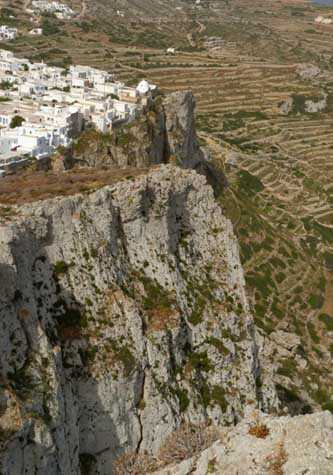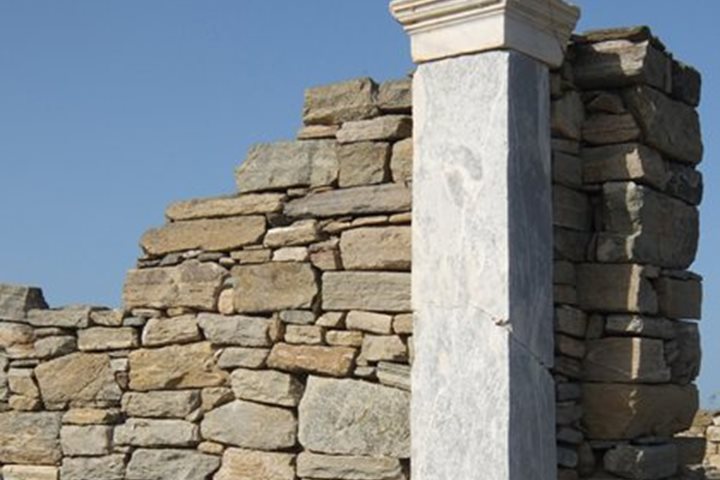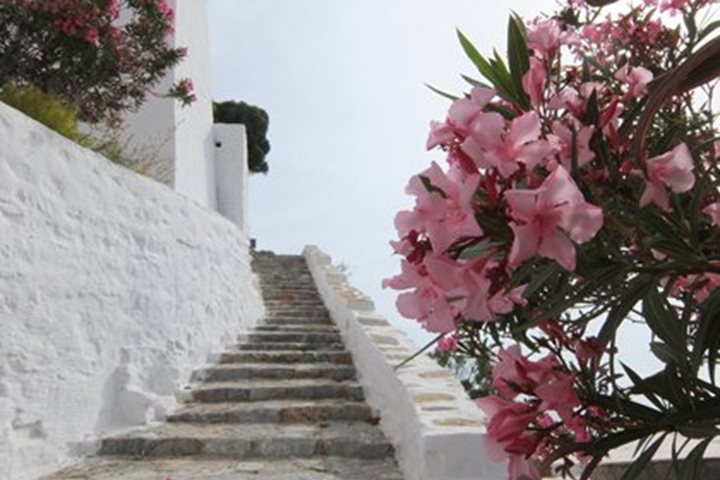It was an idyllic, idle day as we ventured off the beaten track to discover the islands of Greece as many imagine them to be. Few travel beyond the world of tourist meccas, but the rewards are great for those that do.
There is something mesmerizing about mornings at sea just as the sun is rising. Barely perceptible in the haze, Apollo’s chariot lifted from the waters, its brilliance muted to such a degree that it took on the appearance of a lunar orb. Clouds drifted in front decorating it with lines and ripples, squeezing it into an oval until it rose above the moisture-laden air and our eyes could no longer watch. It drew a silver path across the sea, dancing on red and white fishing boats and lazy gulls and shearwaters.
The island of Folegandros metamorphosed from a shadow at the edge of our view to an inviting peaceful harbor at Karavostasis town. One wonders why the Romans and more recent politicians saw fit to exile many to this place. It seemed today to be a choice vacation site. Like most of the Cycladic Islands, the main town or chora hid as far from the sea as it could be, safe from pirates of the past. Unlike those marauders of bygone days, we were more than willing to walk and explore although a bus ride up the hill simplified our task and saved our energy for the hike back down. From even higher, above the tiny ancient town, we looked upon the turquoise waters and the land lined with garden terraces no longer used. In the local plaza we could sit sipping frappes and cappuccinos watching the residents that likewise sat and gazed right back with friendly smiles and greetings. The limestone hills sloped downwards to the harbor, their shoulders draped with rounded mounds of vegetation widely spaced apart. It didn’t take more than one step away from the designated paths to discover these shrubs that exhibited typical desert adaptations. Two forms of Euphorbia or spurge lived side-by-side, one drought deciduous with irritating milky sap (tree spurge), the other thoroughly armed with thorns (Greek spiny spurge).
No one lives on Poliegos now except the goats and thus the island was ours and ours alone for the late afternoon. Turquoise bays indent its coast, each bordered by sandy beaches. Swimmers swam or soaked up sun while hikers went exploring. Over ridges and down in valleys we meandered absorbing the odors of tiny thyme or the waist-high juniper forest. At every turn evidence could be seen that people had been here long ago. Chips of marble and obsidian, abandoned homes that once were fine, caves that once were occupied, and more sent our minds to imagining.
At the end of the day, the golden light glanced off the hull of our favorite vessel and we were drawn back to the Sea Cloud for food and merry entertainment.







